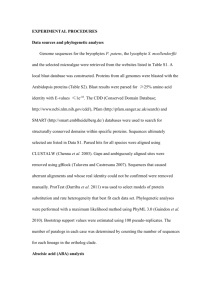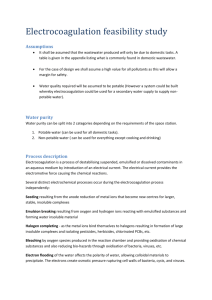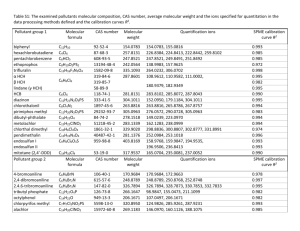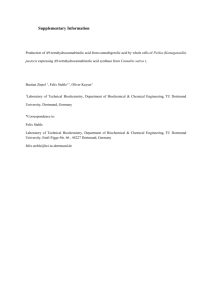rcm7152-sup-0001-Supplementary
advertisement
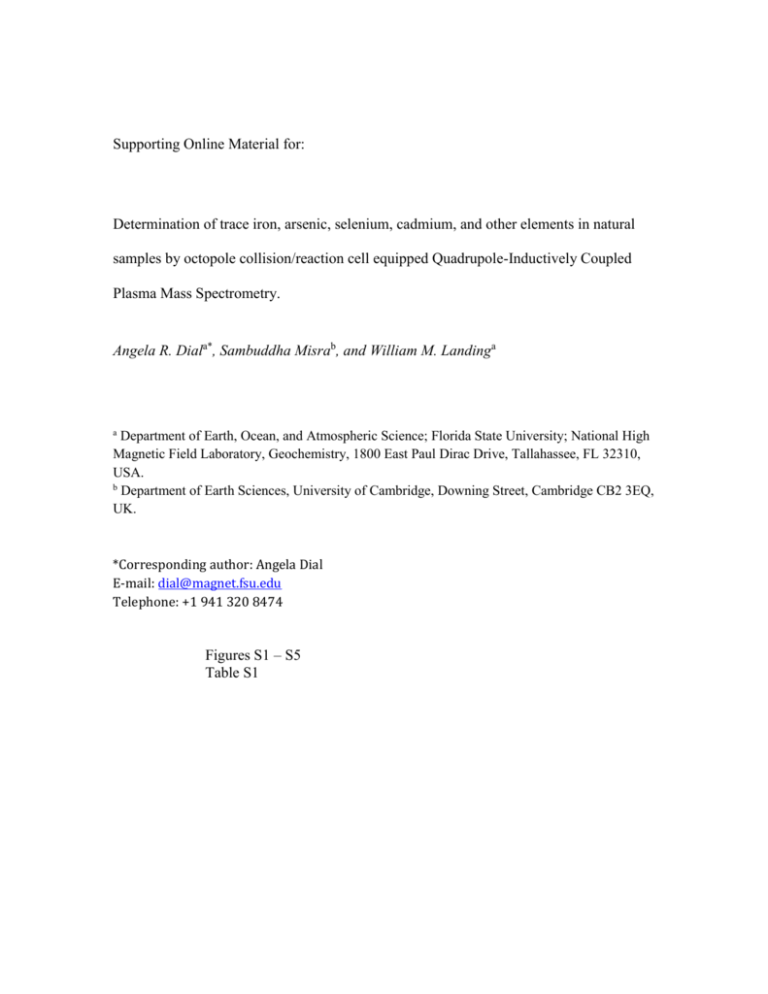
Supporting Online Material for: Determination of trace iron, arsenic, selenium, cadmium, and other elements in natural samples by octopole collision/reaction cell equipped Quadrupole-Inductively Coupled Plasma Mass Spectrometry. Angela R. Diala*, Sambuddha Misrab, and William M. Landinga a Department of Earth, Ocean, and Atmospheric Science; Florida State University; National High Magnetic Field Laboratory, Geochemistry, 1800 East Paul Dirac Drive, Tallahassee, FL 32310, USA. b Department of Earth Sciences, University of Cambridge, Downing Street, Cambridge CB2 3EQ, UK. *Corresponding author: Angela Dial E-mail: dial@magnet.fsu.edu Telephone: +1 941 320 8474 Figures S1 – S5 Table S1 Figure S1. Collision mode (CM) gas flow (He) optimization for 56Fe (S1A), 78Se (S1B), and 75As (S1C) in hot plasma. The volume of He gas flow rate into the Collision/Reaction Cell (CRC) (mL min-1) is plotted on the X-axis; the left hand Y-axis denotes analyte sensitivity in matrix blank and standard (1 µg L-1) in logarithmic scale; the right hand Y-axis denotes the signal-to-noise ratio (1 µg L-1 standard sensitivity /matrix blank) in linear scale. Analyses were carried out in mixed acid matrix (0.048 M HNO3 + 0.045 M HCl). Circles represent matrix blanks; squares: standard sensitivity; and diamonds: signal-to-noise ratios (S/N) (cps-per-µg∙L-1 / matrix blank). The ranges of optimal gas flow rate, as defined by low matrix blank and high S/N, is shaded in gray. 56 Fe and 78Se have plasma-based Ar-O and Ar-Ar interferences, respectively, whereas 75 As has matrix-based interference from Ar-Cl. Operation of CRC in CM is inefficient in eliminating plasma-based polyatomic interferences, which is evident from the very low S/N (< 5) for 56Fe and 78Se at high He gas flow. For 75As, a better S/N (~25) can be achieved in CM as weaker Ar-Cl bonds are more efficiently broken during collision with He. This inefficiency of CM in removing plasma-based polyatomic interferences essentially rules out analyses of elements with Ar-based interference via this CRC mode. Figure S2. Reaction mode (RM) gas flow rate (H2) optimization for 78Se (S2A) and 75As (S2B) in hot plasma. The volume of H2 gas flow rate into the CRC (mL min-1) is plotted on the X-axis; the left hand Y-axis denotes analyte sensitivity in matrix blank and standard (1 µg L-1) in logarithmic scale; the right hand Y-axis denotes the signal-to-noise ratio (1 µg L-1 standard sensitivity / matrix blank) in linear scale. Analyses were carried out in mixed acid matrix (0.048 M HNO3 + 0.045 M HCl). Circles represent matrix blanks; squares: standard sensitivity; and diamonds: signal-to-noise ratios (S/N). The ranges of optimal gas flow, as defined by low matrix blank and high S/N, is shaded in gray. Figure S3. Signal-to-noise (S/N) ratios of 54Fe (grey circles), 56Fe (black diamonds), and 57 Fe (half-shaded squares) using a 1 μg L-1 high purity standard in 0.44 M HNO3 as the H2 gas flow rate increases in the CRC. S/N is given in log scale to magnify low ratios on 54 Fe and 57Fe compared with 56Fe. The ArN+ and ArOH+ ions interfere with 54Fe+ and 57 Fe+, respectively, and are not as efficiently eliminated via the CRC as the ArO+ interference on 56Fe+ is.





